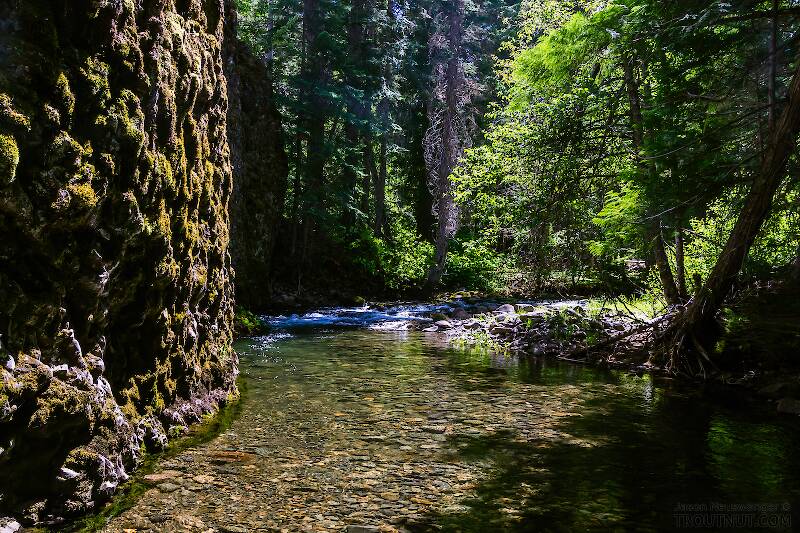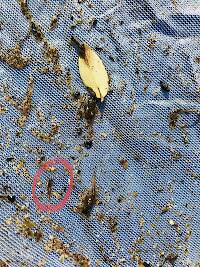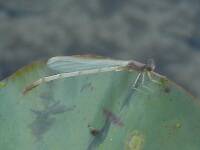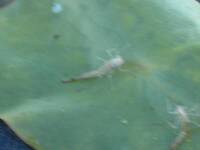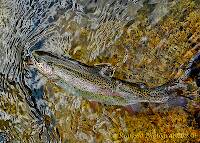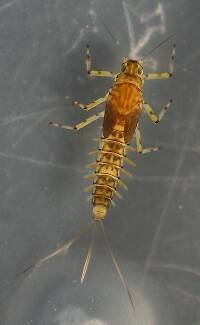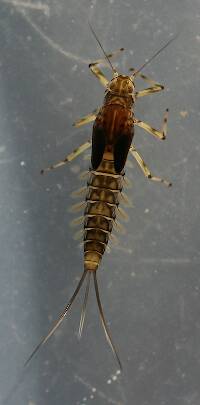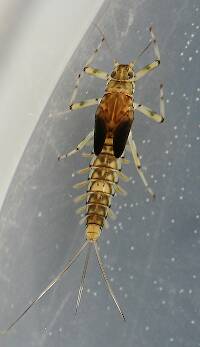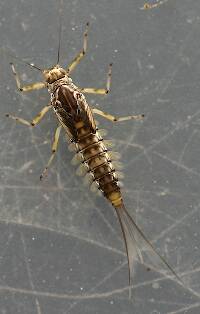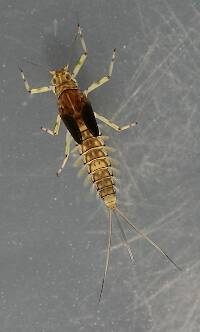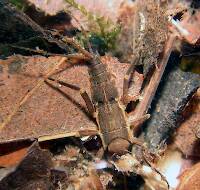
Hex Mayflies
Hexagenia limbata
The famous nocturnal Hex hatch of the Midwest (and a few other lucky locations) stirs to the surface mythically large brown trout that only touch streamers for the rest of the year.
Featured on the forum

I caught this tiny larva without a case, but it seems to key pretty clearly to to Glossosomatidae. From there, the lack of sclerites on the mesonotum points to either Glossosoma or Anagapetus. Although it's difficult to see in a 2D image from the microscope, it's pretty clear in the live 3D view that the pronotum is only excised about 1/3 of its length to accommodate the forecoxa, not 2/3, which points to Glossosoma at Couplet 5 of the Key to Genera of Glossosomatidae Larvae.

Troutnut is a project started in 2003 by salmonid ecologist Jason "Troutnut" Neuswanger to help anglers and
fly tyers unabashedly embrace the entomological side of the sport. Learn more about Troutnut or
support the project for an enhanced experience here.
RyanBednar has attached these 3 pictures to aid in identification. The message is below.
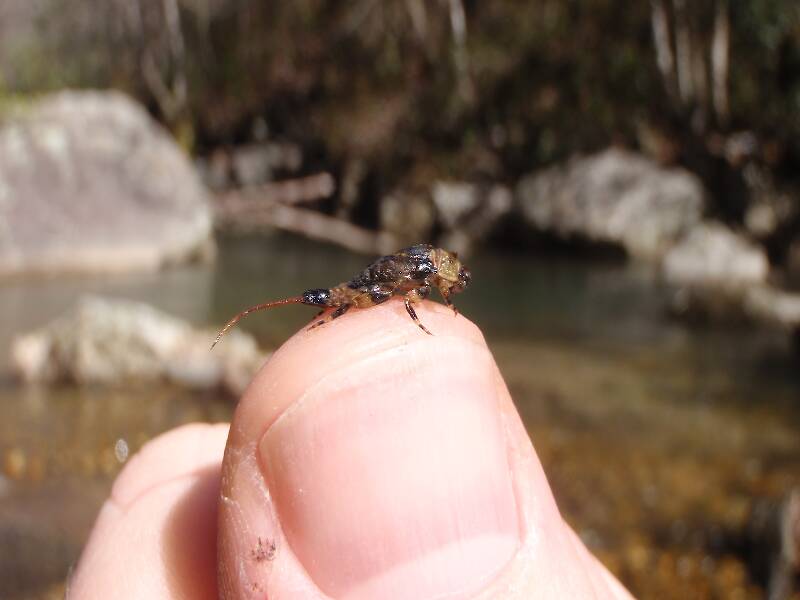
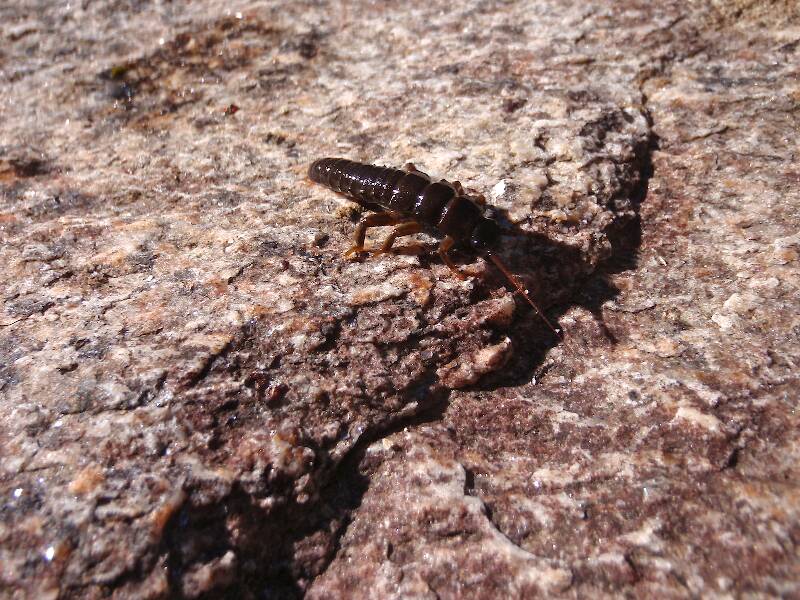
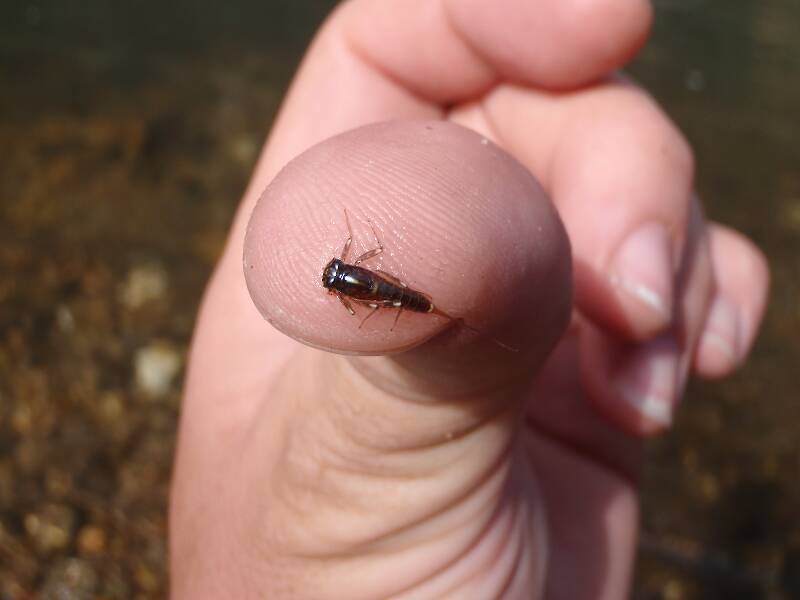
RyanBednar on Apr 26, 2010April 26th, 2010, 3:42 am EDT
Hello everyone,
This is my first post on here... been lurking (and learning) for some time now, but over the past year or so, I've been taking photos of insects that I've been finding on my favorite wild stream here in NC. It's been enlightening to see progression of species throughout the 4 seasons.
Anyways, I've come across a few insects that I have yet to identify... was wondering if you guys might be able to help...
Thanks in advance for any help!
This is my first post on here... been lurking (and learning) for some time now, but over the past year or so, I've been taking photos of insects that I've been finding on my favorite wild stream here in NC. It's been enlightening to see progression of species throughout the 4 seasons.
Anyways, I've come across a few insects that I have yet to identify... was wondering if you guys might be able to help...
Thanks in advance for any help!
Taxon on Apr 26, 2010April 26th, 2010, 5:41 am EDT
Hi Ryan,
Welcome to the forum. Just a bit of advice: Take a jar lid with you next time. It needs to be white inside to provide a proper background for your photos. Just set it on a level surface. Place the insect inside it, add a sufficient amount of water to completely cover the insect, and then take your photos. This will result in ever-so-much better results for purposes of identification, as the body appendages will no longer stick to the body and one another. Incidentally, for hand held photos, they sure are in good focus and have a lot of resolution. What camera/lens are you using?
Welcome to the forum. Just a bit of advice: Take a jar lid with you next time. It needs to be white inside to provide a proper background for your photos. Just set it on a level surface. Place the insect inside it, add a sufficient amount of water to completely cover the insect, and then take your photos. This will result in ever-so-much better results for purposes of identification, as the body appendages will no longer stick to the body and one another. Incidentally, for hand held photos, they sure are in good focus and have a lot of resolution. What camera/lens are you using?
GONZO on Apr 26, 2010April 26th, 2010, 5:54 am EDT
Hi Ryan...welcome!
The top photo is Ephemerella. It might be subvaria or invaria. E. subvaria (Hendrickson) emerges earlier, but you'd have to take a very close look at the little twin projections at the rear edge of the dorsal abdominal segments to differentiate them. (These are usually slightly more prominent and black-tipped in subvaria, but interpreting the projections can be tricky.)
The middle photo is Pteronarcys (Giant Black Stoneflies/Salmonflies). Judging from the shape of the pronotum and the configuration of the lateral spines along the abdomen, it is probably Pteronarcys proteus, the Appalachian Salmonfly.
The last photo is Cinygmula (Heptageniidae). The little bumps on the side of the head just ahead of the eyes are mouthparts that project to the sides. I believe that C. subaequalis is the only Eastern species of this genus.
Other examples of all of these can be found among Jason's specimens.
The top photo is Ephemerella. It might be subvaria or invaria. E. subvaria (Hendrickson) emerges earlier, but you'd have to take a very close look at the little twin projections at the rear edge of the dorsal abdominal segments to differentiate them. (These are usually slightly more prominent and black-tipped in subvaria, but interpreting the projections can be tricky.)
The middle photo is Pteronarcys (Giant Black Stoneflies/Salmonflies). Judging from the shape of the pronotum and the configuration of the lateral spines along the abdomen, it is probably Pteronarcys proteus, the Appalachian Salmonfly.
The last photo is Cinygmula (Heptageniidae). The little bumps on the side of the head just ahead of the eyes are mouthparts that project to the sides. I believe that C. subaequalis is the only Eastern species of this genus.
Other examples of all of these can be found among Jason's specimens.
RyanBednar on Apr 26, 2010April 26th, 2010, 7:39 am EDT
Thanks for the great info!
Taxon - Thanks for the photo tips, I've been trying to figure out a good background for identification purposes... the jar lid is a great idea... effective and doesn't take up much space in my pack. My camera is a Olympus StylusTough 8000 waterproof point-and-shoot. Overall I've been very happy with the quality and versatility of the camera. I shoot most of these photos in the "Super Macro" preset. It takes a few shots to find the right focal distance and keeping my shadow out of the pictures, but it works pretty well.
Gonzo - Good to know that distinguishing invaria and subvaria can be tricky... I'll take a white lid out next time as Taxon suggested and I'll see if I can get a little more detailed photos of those projections.
Cool to know that there are some Salmonflies on my favorite stream... of course the Golden Stones grossly outnumber them from my samples, but I've already decided to add a few big black stonefly nymphs for my box as well.
The Cinygmula I found recently were very striking in their markings... I haven't seen many of them, which seems consistent with the info here on Jason's site. It's just nice to see how much diversity (and relative abundance) this stream offers...
Thanks again for the info and warm welcome. I look forward to learning and participating on the forums more often.
Taxon - Thanks for the photo tips, I've been trying to figure out a good background for identification purposes... the jar lid is a great idea... effective and doesn't take up much space in my pack. My camera is a Olympus StylusTough 8000 waterproof point-and-shoot. Overall I've been very happy with the quality and versatility of the camera. I shoot most of these photos in the "Super Macro" preset. It takes a few shots to find the right focal distance and keeping my shadow out of the pictures, but it works pretty well.
Gonzo - Good to know that distinguishing invaria and subvaria can be tricky... I'll take a white lid out next time as Taxon suggested and I'll see if I can get a little more detailed photos of those projections.
Cool to know that there are some Salmonflies on my favorite stream... of course the Golden Stones grossly outnumber them from my samples, but I've already decided to add a few big black stonefly nymphs for my box as well.
The Cinygmula I found recently were very striking in their markings... I haven't seen many of them, which seems consistent with the info here on Jason's site. It's just nice to see how much diversity (and relative abundance) this stream offers...
Thanks again for the info and warm welcome. I look forward to learning and participating on the forums more often.
Quick Reply
Related Discussions
Topic
Replies
Last Reply
Re: Drunella cornuta on the Brodhead at Stroudsburg PA
In the Mayfly Species Drunella cornuta by Reify
In the Mayfly Species Drunella cornuta by Reify
11
Apr 24, 2014
by Brookyman
by Brookyman
4
Nov 19, 2017
by Btbo32
by Btbo32
1
Jul 11, 2008
by Taxon
by Taxon

